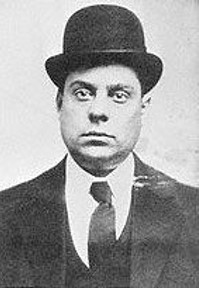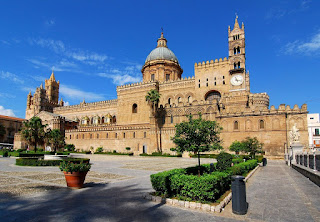Marella Agnelli - noblewoman and socialite
Married for 50 years to Fiat patriarch Gianni Agnelli
Donna Marella Caracciolo di Castagneto, the noblewoman from an old Neapolitan family who married the jet-setting chairman of car giants Fiat, Gianni Agnelli, was born on this day in 1927 in Florence. Simply known as Marella Agnelli, she was propelled by her marriage at the age of 26 into a world in which she became a socialite and style icon, devoting her life to collecting art, decorating the numerous homes she and her husband kept in Europe and beyond, and attending and hosting lavish, exclusive parties. The couple would eventually have homes in Rome, Paris, New York, Corsica and Saint-Moritz, as well as several houses in and around Agnelli’s home city of Turin, including the Agnelli estate in the foothills of the Italian Alps. As a member of the House of Caracciolo, she was regarded as high Italian nobility, although she admitted that the conservative aristocratic circles in which she grew up were a long way removed from the new life she took on at Agnelli’s side. Her father was Don Filippo Caracciolo, 8th Prince di Castagneto, 3rd Duke di Melito, and hereditary Patrician of Naples, who married an American whiskey heiress, Margaret Clarke. Read more…
______________________________________
Bartolomeo Cristofori - inventor of the piano
Instrument maker adapted harpsichord to play soft and loud notes
Bartolomeo Cristofori, the man widely credited with inventing the piano, was born on this day in 1655 in Padua. He came up with the idea while working for the Grand Prince Ferdinando de' Medici in Florence, who had hired him to look after his collection of harpsichords and other instruments. It is thought that Cristofori, who was assumed to have been an established maker of musical instruments when Ferdinando invited him to Florence in around 1690, wanted to create a keyboard instrument similar to a harpsichord but capable of playing notes of varying loudness. An inventory of Medici instruments from 1700 described an "arpi cimbalo", which resembled a harpsichord but which created sounds through hammers and dampers rather than the plucking mechanism employed by the harpsichord. It was said to be "newly invented by Bartolomeo Cristofori". In 1711, Scipione Maffei, a poet and journalist, referred to Cristofori's "gravicembalo col piano, e forte" (harpsichord with soft and loud), the first time it was called by its eventual name, pianoforte. A Florentine court musician, Federigo Meccoli, noted that the "arpi cimbalo del piano e forte" was first made by Cristofori in 1700, which is regarded as the birth date for the piano. Read more…
____________________________________
Anthony Martin Sinatra - father of Frank
Sicilian who became a professional boxer in New York
Saverio Antonino Martino Sinatra, who at various times was a fireman, a professional boxer and the owner of a bar, was born on this day in 1894 in Lercara Friddi, a mining town in Sicily, about 70km (44 miles) south-east of the island’s capital, Palermo. Usually known as Antonino, after emigrating to the United States he married Natalie Garaventa, a girl from near Genoa who lived in his neighbourhood in New York City. They set up home in New Jersey and had a son, whom they christened Francis Albert, who would grow up to be better known as Frank Sinatra, one of the most popular entertainers of all time. Lercara Friddi today is a town of between 7,000 and 8,000 inhabitants, which at the time of Antonino’s birth was an important centre for the mining of sulphur. His father, Francesco, worked there as a shoemaker and married Rosa Saglimini. They had seven children, although two of them were believed to have died during an outbreak of cholera. Early in Antonino’s life, Francesco decided to join the growing number of Sicilians who believed their prospects of escaping a life of poverty in their homeland were slim and after sailing to Naples boarded a ship bound for New York. Read more…
___________________________________
Osbert Sitwell – English writer
Baronet’s love for a Tuscan castle
Sir Francis Osbert Sacheverell Sitwell died on this day in 1969 at the Castello di Montegufoni near Florence in Tuscany. Like his famous elder sister, Edith Sitwell, who was a poet, and his younger brother, Sacheverell, an art and music critic and a prolific writer, Osbert devoted his life to art and literature. His father, Sir George Reresby Sitwell, had purchased the Castle of Montegufoni, which is 20 km from Florence, in 1909 when it was derelict and restored it beautifully to become his personal residence. Osbert inherited the castle after his father’s death in 1943 along with the baronetcy and he reigned over Montegufoni for the rest of his life. Osbert was born in 1892 and grew up at the family homes in Derbyshire and Scarborough. In 1911 he joined the Sherwood Rangers Yeomanry but soon transferred to the Grenadier Guards and was based at the Tower of London, enabling him to go to the theatre and art galleries when he was off duty. In 1914 he was sent to the trenches near Ypres in French, where the experience inspired him to write his first poems. He left the Army with the rank of Captain and contested the 1918 general election as a Liberal. Read more…
_____________________________________
Book of the Day: Marella Agnelli: The Last Swan, by Marella Agnelli and Marella Caracciolo Chia
Marella Agnelli: The Last Swan provides a window into the exclusive world of one of the 20th century's most glamorous and alluring women, as seen through her private homes and gardens. Nicknamed ‘the swan’ by Richard Avedon when he photographed her iconic portrait in 1953, Marella Agnelli was born a Neapolitan princess, Marella Caracciolo di Castagneto. She became Marella Agnelli with her marriage to Gianni Agnelli, the Fiat industrialist. However, her innate style dates back to her New York internship with photographer Erwin Blumenfeld, and she was a Vogue contributor in the 1950s and '60s as well as appearing in its pages. As well as Avedon, she was photographed by Irving Penn, Henry Clarke, Horst, and Robert Doisneau among others. Agnelli collaborated with the best artists and designers of her day, with her many residences as their palette. From Italian interior design legend Renzo Mongiardino - who worked on her New York apartment alongside a young Peter Marino - to Gae Aulenti, the important Italian architect, who built her homes in Turin and Marrakech, Agnelli created a series of extraordinary houses and gardens, full of timeless elegance, invaluable art, and ground-breaking decorating ideas. With ten residences spread throughout Turin, Rome, Milan, New York, St. Moritz, and Marrakech, ranging from regally classic villas to ultramodern apartments, her impeccable taste shines through in the gorgeous interiors and gardens
Born in Florence, Marella Agnelli died in Turin in 2019 at the age of 91. She was married to Gianni Agnelli from 1953 until his death in 2003. They had two children and eight grandchildren. Montreal-born author and journalist Marella Caracciolo Chia, who lives in Rome, is Marella’s niece.

.jpg)








.jpg)









.jpg)
